This is the second in a five-part series on the historic home courts of the Indiana University basketball program. Today we take a look at the second home of the Hoosiers — the Men’s Gymnasium on 7th Street.
A HYSTERIA GROWS
By 1915, the popularity of college athletics was accelerating rapidly, and it didn’t take long for the relatively new original Assembly Hall to be viewed as inadequate. With the student body petitioning for a new facility, IU began exploring alternatives and ultimately landed on a plan to construct a new state-of-the-art facility.
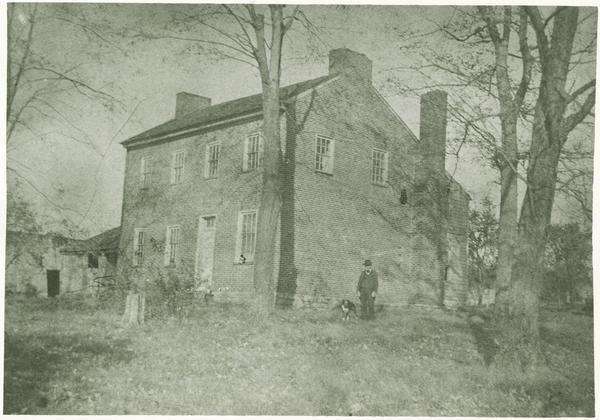
An August 15, 1915 Sunday Indianapolis Star headline said it all: “Indiana University’s New Gymnasium Will Be One of the Best”. The accompanying article estimated that the cost to build the new gym would be $175,000.
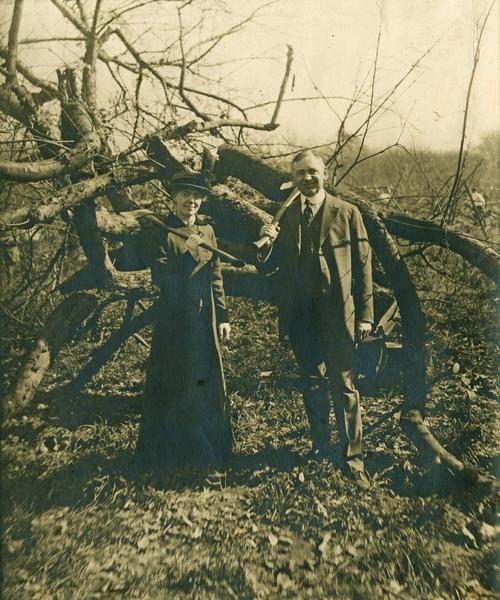
The Indianapolis News reported that on December 7th, 1915, ground was broken for the new Men’s Gymnasium a few feet east of the old Dunn homestead. The cost estimate for the facility now stood at $225,000.
Construction took just over a year, and by early January of 1917 the IU men’s basketball team was using the new facility for practice. The final cost of the gym was around $250,000, or around $5 million in today’s dollars.
Beyond the basketball gym, the facility included a pool, an indoor track, locker rooms, a trophy room and IU athletics administrative offices. It also included some decorative tile details that became a source of controversy decades later.
On the same day that IU was celebrating its 97th anniversary, the first men’s basketball game was played in the Men’s Gymnasium on January 19, 1917. The day was so significant that classes were cancelled, although that likely had more to do with the anniversary.
The Indianapolis Star reported that 3,000 packed into the new gym, which it described as having no equal in the Midwest. The Star said it was the largest crowd to see a basketball game in Bloomington. They could not have imagined that an arena nearly six times that size would be constructed by IU just over 50 years later.
Indiana defeated Iowa by a score of 12-7 in the inaugural contest in the gym. The 12 points scored by the Hoosiers is the lowest point total ever by IU in a win.
Not long after that initial game, complaints were lodged about obstructed views from behind the basket. In response, IU had The Nurre Company of Bloomington, Indiana build glass backboards and had them installed in the Men’s Gymnasium.
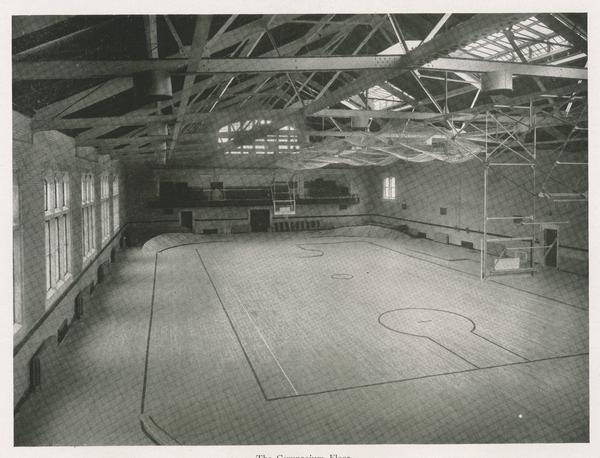
While it has been widely believed that the Men’s Gymnasium was the first basketball facility in the country to have glass backboards, that may not be true.
On page one of the January 4, 1917 edition of The Indiana Daily Student can be found an article regarding the December 9, 1916 basketball game between Rose Poly and Purdue (at Purdue). The article reads, in part: “Coach Mefford, of the Rose Poly team, claimed that the glass backboards in the Purdue gym handicapped his team.
The legendary Indiana high school basketball tournament, which had been played at the Original Assembly Hall, was moved to the Men’s Gymansium in 1917. The tournament would continue to be played here until 1921 when it moved to Indianapolis.
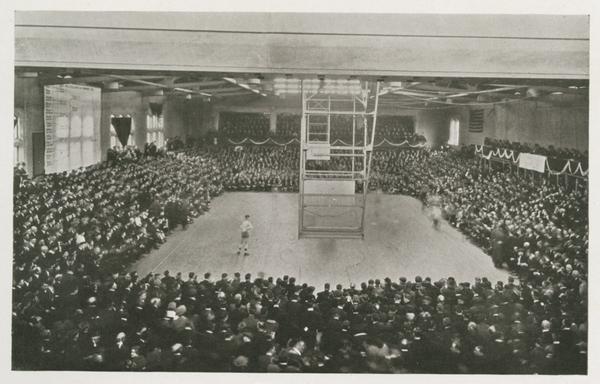
Perhaps not by coincidence, IU’s early basketball success as a program coincided with the opening of its new home court. After some inconsistency at the original Assembly Hall, the Hoosiers never had a losing season during their twelve years in the Gothic Men’s Gymnasium.
Today’s “inside out” recruiting strategy had a different meaning at the time, when virtually the entire team was made up of Hoosier natives from the now basketball crazed state. In fact, the 1924-25 top three scorers were all from Bloomington — Harlan Logan, Palmer Sponsler and Julius Krueger.
By 1925, the program was emerging as a powerhouse. Everett Dean played at Indiana from 1918 to 1921. During his senior season in 1921 he would become IU’s first All-American. In 1924 he became the head coach of the men’s basketball team. He would go on to become the first legendary leader of the program. He led the team to the 1926 and 1928 Big Ten titles while playing at the Men’s Gymnasium.
One star of that 1928 Big Ten championship team was sophomore Branch McCracken, who would go on to become another legendary IU coach after learning the craft under Dean’s tutelage.
The last IU men’s basketball game played at the Men’s Gymnasium was on March 3, 1928. The Muncie Star Press indicated that the tightly contested 36-34 IU victory over Michigan allowed the Hoosiers to take the lead in the Western Conference. The Star Press said that IU was led by their “great center” McCracken, who had six field goals and two free throws and took over the conference scoring lead in the process.

As IU wrapped up the Men’s Gymnasium era, Dean had set in motion a new era for IU basketball and established the foundation of excellence that carries on to this day.
With the enthusiasm for the program and the sport once again outgrowing the facility, IU had begun construction of a new gymnasium directly east of the Men’s Gymnasium in 1927. The Hoosiers would move to the adjacent Fieldhouse for the 1928-29 season.
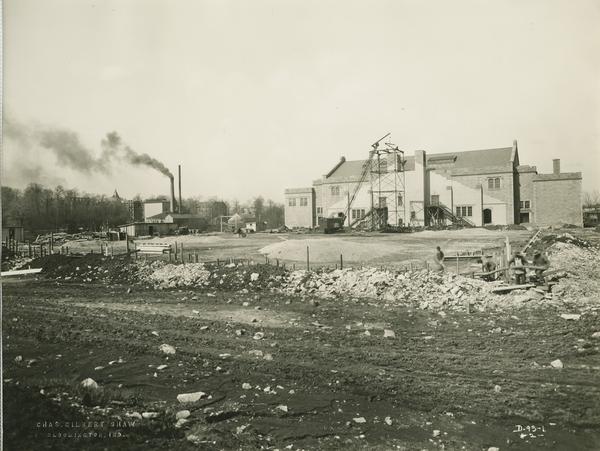
The IU men’s basketball team compiled an 86-31 all-time record at the Men’s Gymnasium. While the team stopped playing there in 1928, various varsity programs used the facility for decades to follow.
The Men’s Gymnasium still stands today, and for the most part still looks the same as it did when it was the home of the Hoosiers. It still has a basketball floor, although now there are two basketball courts oriented east/west rather than the original north/south direction.
The second floor gym is generally open. You can go upstairs and imagine the history and energy that occurred there beginning just over 100 years ago — while you appreciate that this where Indiana University basketball first became an elite national institution.


You can follow us on Twitter: @daily_hoosier
Find us on Facebook: thedailyhoosier




